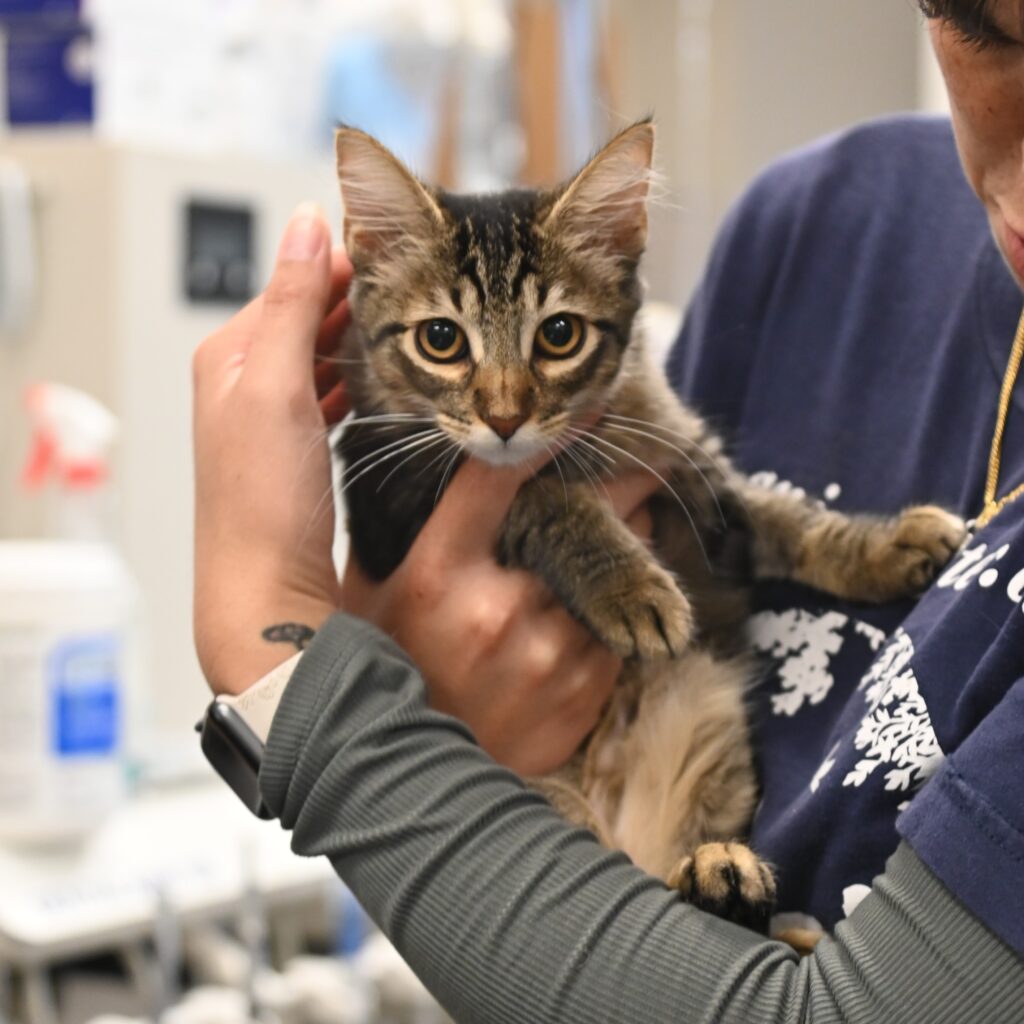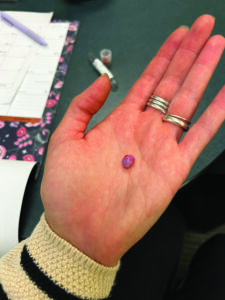The kitten lay on the cold examination table presented a case Dr. Alexis Siler had never seen before. A 12-week-old kitten named Bunny had come to Helen Woodward Animal Center at the start of the summer unable to move like the other kittens that came with her. While they were able to prowl around the examination tables of the Center’s in-house medical clinic, Bunny had to almost crawl her way to the tray of food the veterinarian assistants had laid out before her. The doctor gave a comprehensive exam to Bunny and came to a rather painful conclusion. The young cat had fractured her thigh bone – specifically, the femoral head.

The femoral head is a round piece of bone at the end of the femur that connects almost every mammal’s leg to their pelvis and enables lower body movement. Typically, when you hear of someone “breaking their hip”, they’ve actually fractured their femoral head. In cats, femoral head fractures are almost always caused by some sort of high-speed trauma like getting hit by a car or falling from a tall structure. Rarer causes of the condition include rare forms of degenerative bone disease in elderly cats, and spontaneous fractures in recently neutered male cats that are young and obese. However, the most common victims of femoral head fractures are kittens.
“We usually see these sorts of cases in six to nine-month-old kittens,” Dr. Siler said. “At that age, they’re more capable of reaching high places, or getting outside – but their bones lack the strength time provides.”
Siler’s examination revealed that some form of trauma caused the 12-week-old Bunny’s fracture. Unfortunately, there wasn’t enough evidence to determine if the trauma was caused by a car accident or a fall. All Dr. Siler and the rest of the Center’s staff could do is focus on the road to treatment. They determined the best way to treat Bunny was to perform a Femoral Head Ostectomy, also known as an FHO surgery. This procedure is one of the most common treatments for femoral head fractures in the veterinary world.
FHO’s involve removing the femoral head and sometimes the femoral neck – the bone tissue that connects the femoral head with the rest of the femur – leaving an empty socket. At first, the cat might be a little unstable when standing as the leg muscles put in overtime to stabilize the missing bone tissue. Over time, the kitty’s body will star to build scar tissue in the empty socket, creating a “false joint” that provides the same functionality as the normal ball and socket joint the cat had pre-injury.
The team knew that performing an FHO surgery on such a small kitten would require a specialist with years of experience, in a state-of-the-art operating room. So, the Center brought in Dr. Jerome Reinke, a veterinary orthopedic specialist focusing on tendons and joints, to perform Bunny’s FHO procedure at Helen Woodward Animal Center’s Companion Animal Hospital. Dr. Reinke has been practicing veterinary medicine for over 50 years and has performed thousands of FHO surgeries over his career – he was the perfect person for the job.
On the morning of August 1st, Dr. Reinke and the Center’s medical team administered anesthesia to Bunny and began the procedure. After making the initial incision, the veteran veterinarian made a startling discovery. Bunny had already developed scar tissue between her femoral head and pelvis. According to Veterinarian Assistant Sophia Abdelwahed, this made the procedure almost effortless.
“Dr. Reinke told me it was the easiest surgery he’s ever done,” Abdelwahed said. “The femoral head just popped out. Normally, an FHO surgery takes like 2 to 3 hours but Bunny’s only took 15 minutes.”
The presence of scar tissue didn’t just make the surgery easier, but also recovery. Abdelwahed said Bunny was prescribed pain meds and that’s it. Since the false joint had already started to form, she didn’t need any special physical therapy or activity restrictions that you’d normally see in an FHO patient.
The Center sent Bunny to foster care the same day as the surgery to give her a chance to recover in a more comfortable environment. When she came back to the Center a few weeks later to be put up for adoption, she moved like a healthy kitty.
“You couldn’t even tell she had the surgery,” Dr. Siler said.
Within a few short days of being made available, Bunny found her forever home, where she’s lived ever since.





